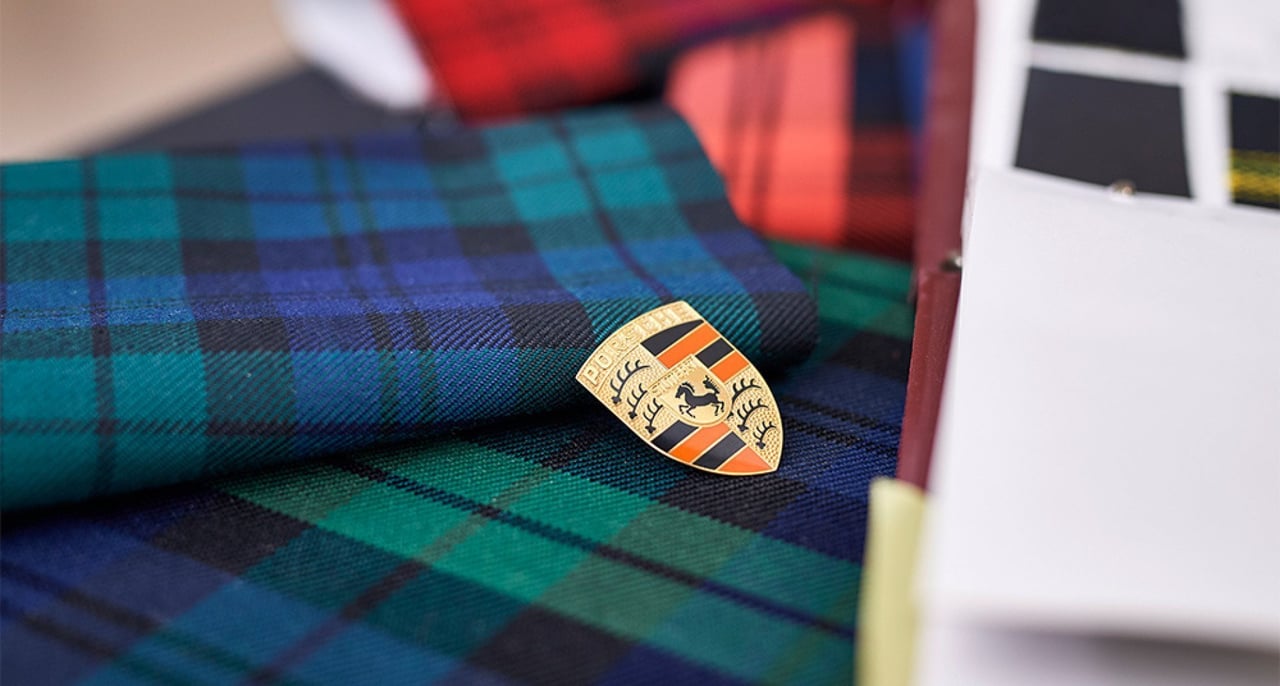
For more than 70 years, Porsche has been building some of the most iconic and desirable sportscars on the planet. To this day, driving a Porsche is recognized globally as a symbol of individualism and personal freedom. However, while for most car enthusiasts owning a Porsche 911 is the ultimate bucket list goal, for others it is only the beginning – the first step in a journey towards the ultimate, personal, one-of-a-kind Porsche of their dreams.
The early years
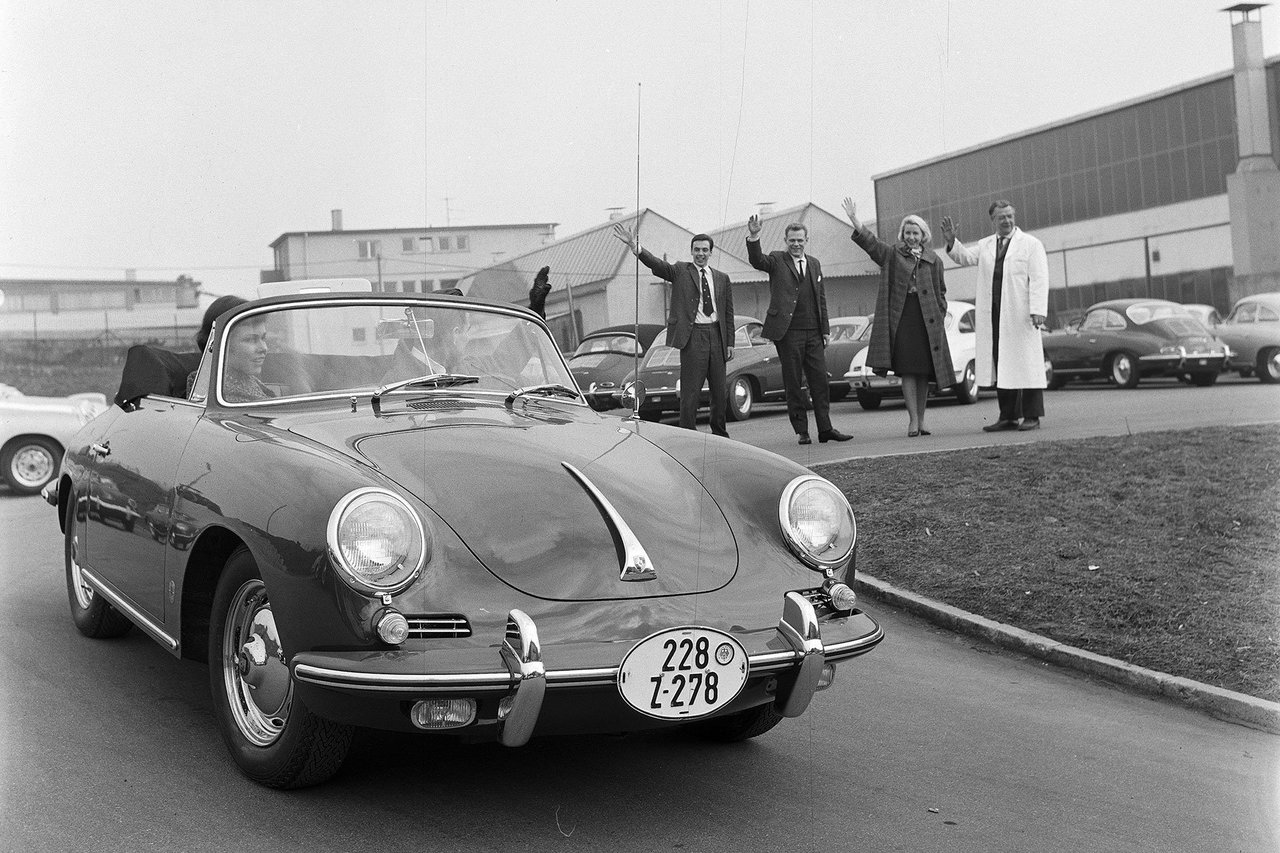
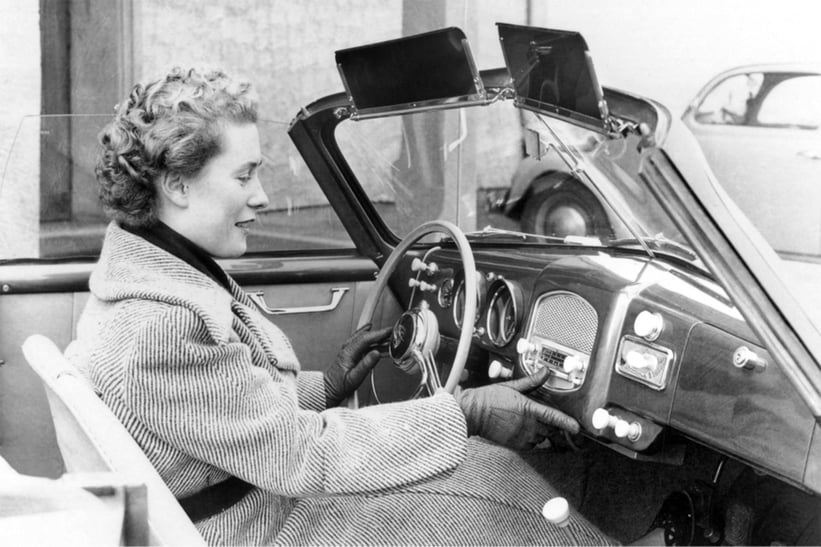
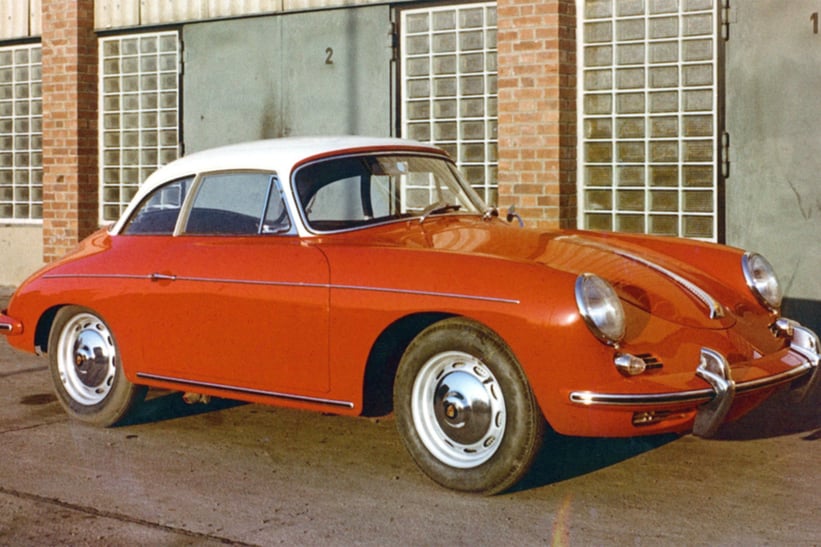
Special customer requests have been considered since the early days of the Porsche brand. When Ferry Porsche began producing the first Type 356 as a limited edition in 1948, each car was built by hand, and thanks to the collaborations with renowned coachbuilders and upholsterers, each one of them was different. In the early 1950s, special commissions were carried out in the workshops in Stuttgart-Zuffenhausen. Even then, some distinguished clients were already requesting subtle coachwork modifications, special colours, leather interiors, reclining seats, and car radios.
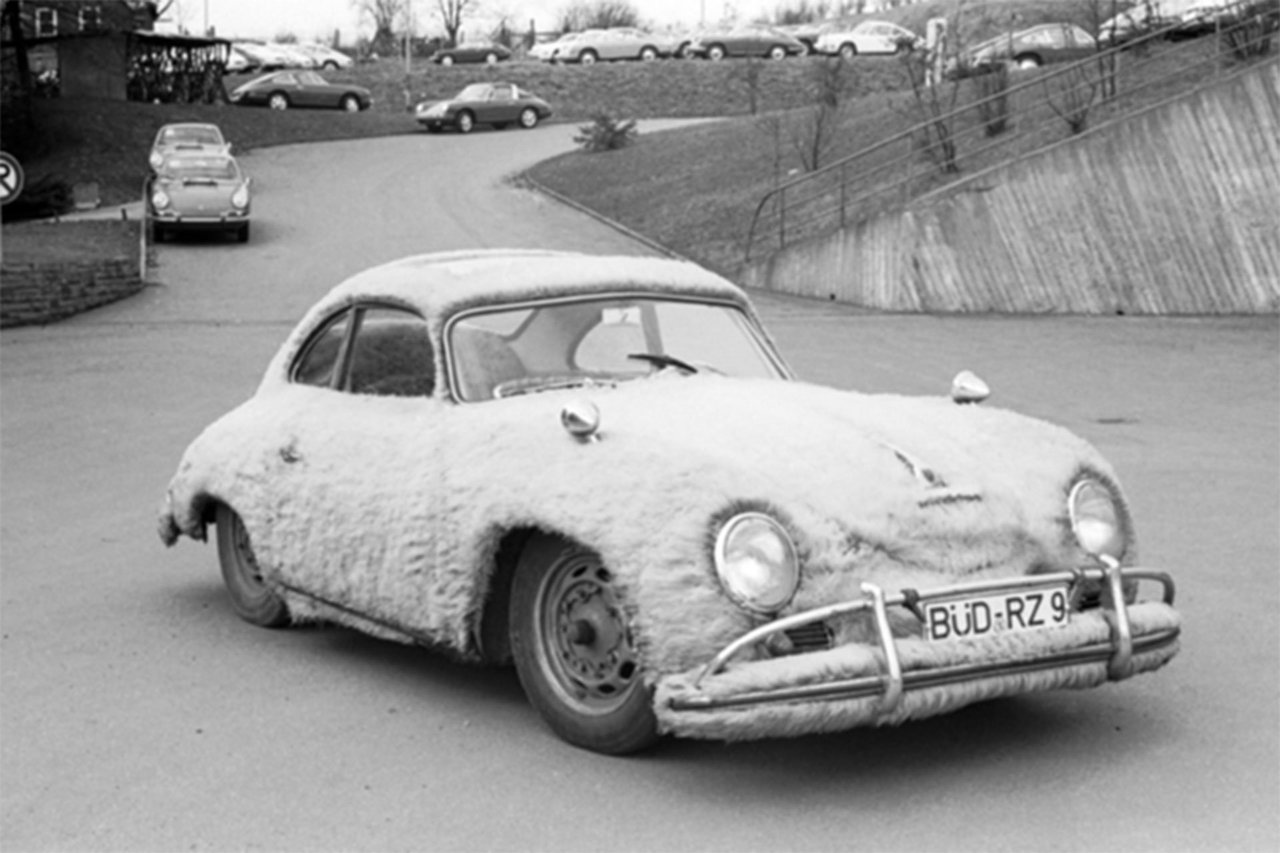
For German Chancellor Konrad Adenauer’s police escort, a Porsche 356 Cabriolet was equipped with a complex radio telephone system, while industrialist Alfred Krupp von Bohlen und Halbach had a rear window wiper installed at great technical expense. But as the catalogues offering extras and accessories for the Porsche 356 grew in size, more and more customers began asking for performance and brake upgrades for racing purposes; a trend that led to the introduction of the more potent “Super” and “Carrera” models.
The experimental 1970s
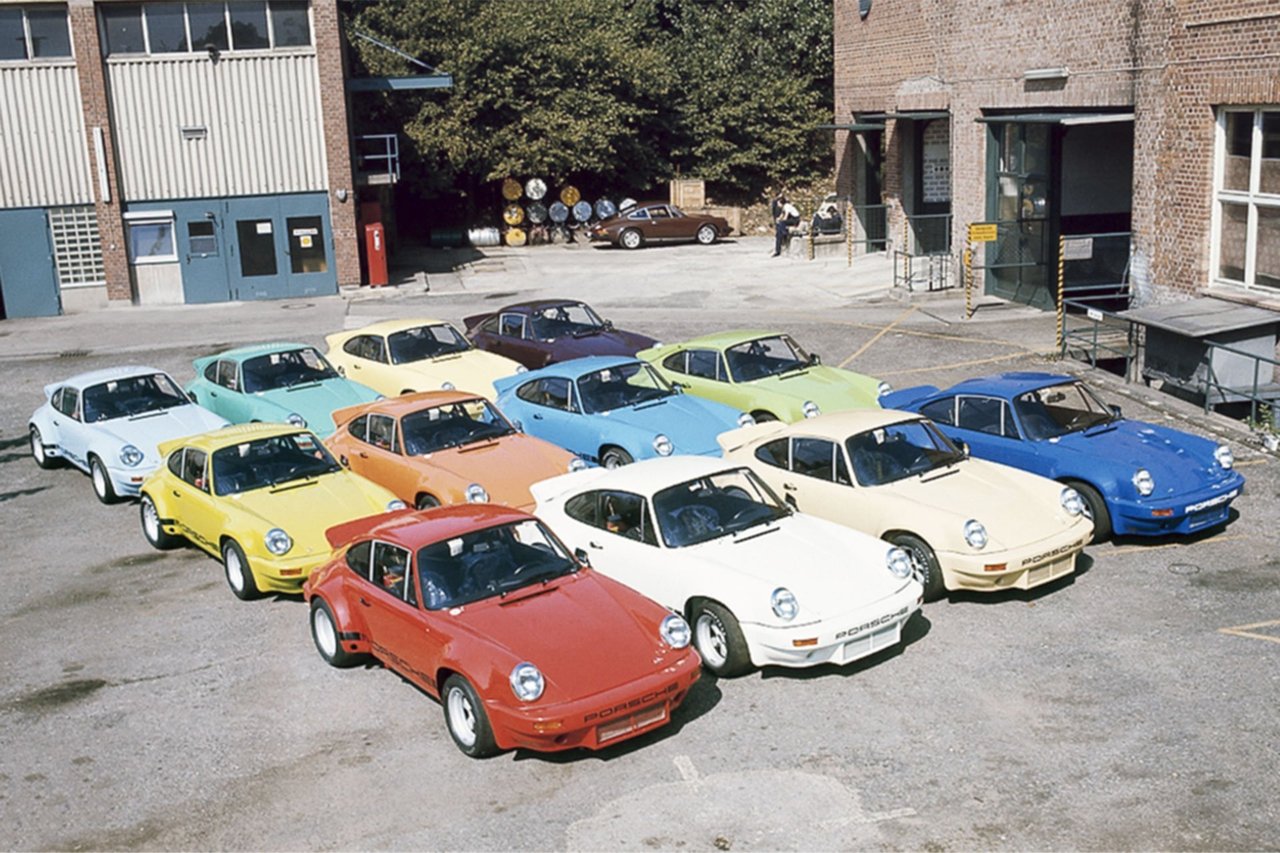
In 1971, Ferry Porsche introduced a main factory repair department, lead by engineer Rolf Sprenger, to provide customers worldwide with technical support. Situated in Porsche’s Werk 1, the unit comprised chassis, engine, and body workshops in a one-stop-shop. At the same time, Porsche expanded its support for motorsport drivers, launching its famous “Kundensportabteilung”. It was the same customer sports department that would soon after build the strictly limited and highly successful Porsche 911 Carrera RSR and RS 3.0 race cars for its distinguished clientele. As team owners landed by helicopter to commission their new track toys, the demand for customized, but street-legal sportscars was increasing as well.
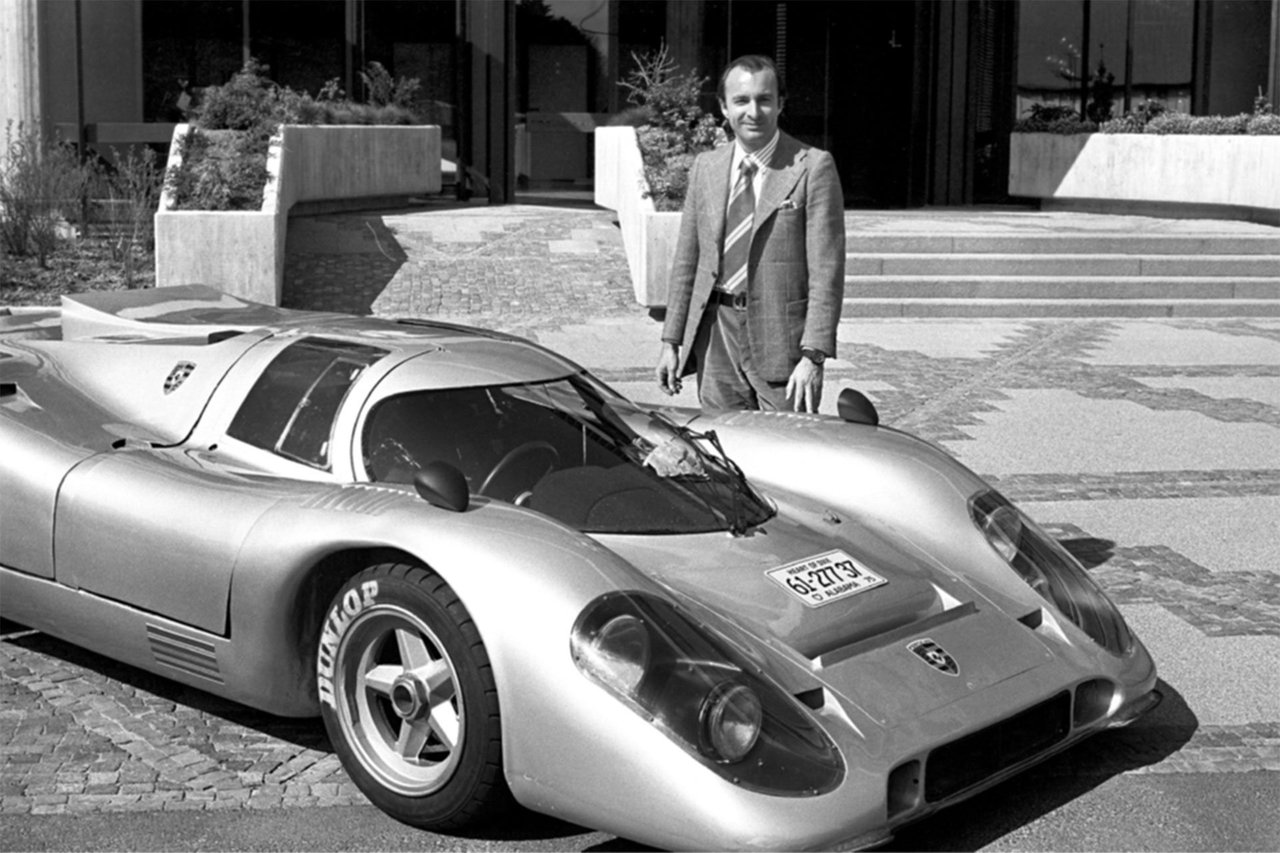

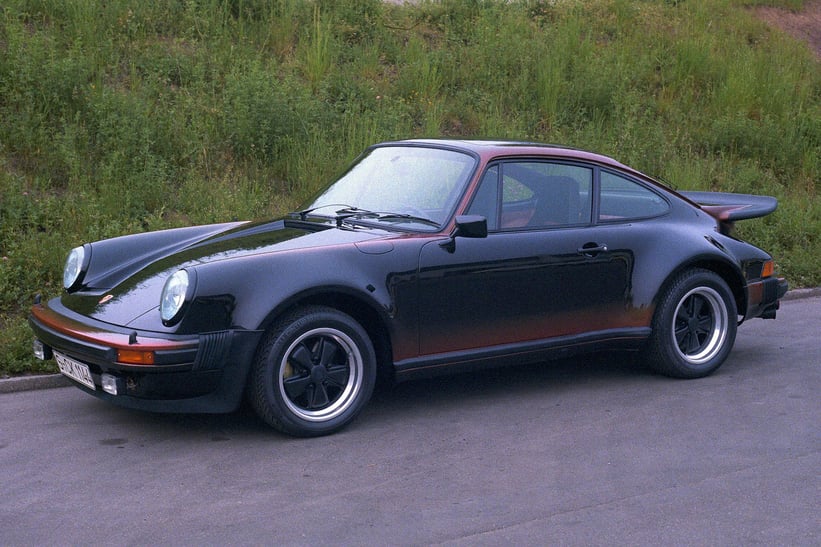
For Martini & Rossi distillery owner Count Gregorio Rossi de Montelera, chief designer Anatole Lapine and the engineers even created a street-legal Porsche 917, while star conductor and long-time Porsche enthusiast Herbert von Karajan commissioned a lightweight version of the Porsche 911 Turbo 3.0 – the only one ever to receive the Carrera RS body. Meanwhile, the in-house designers showcased their abilities with special orders for the Porsche and Piëch families: A Porsche 914/6 with tiger print interior, and a Porsche 911 Carrera RS 2.7 with Paisley pattern seats rank among the wildest creations of the 1970s.
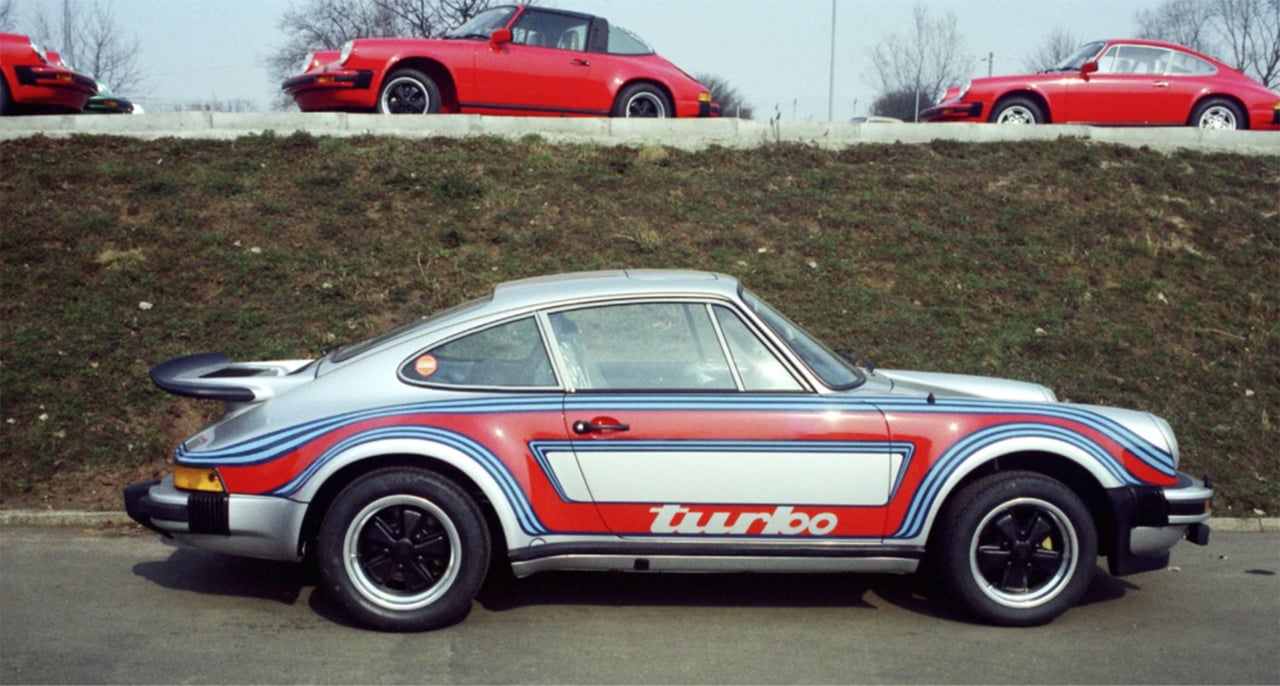
By the mid-1970s, car tuning had turned into a global trend, but what many of the cars boasted in sheer horsepower and style, they were lacking in quality and reliability. In order to meet customer demands for even more special and individual cars at the highest standards of craftsmanship, Porsche bundled up the brand’s individualization services under the name “Sonderwunschprogramm” in 1978, offering customizations for new and existing cars. Services ranged from custom-paint finishes to chassis, engine, and body modifications, and individual interiors. Sportscar cockpits were clad with colourful leather and sophisticated HiFi systems with amplifiers and equalizers were installed. At last, Porsche customers had the opportunity to create the car of their dreams.
The wild 1980s
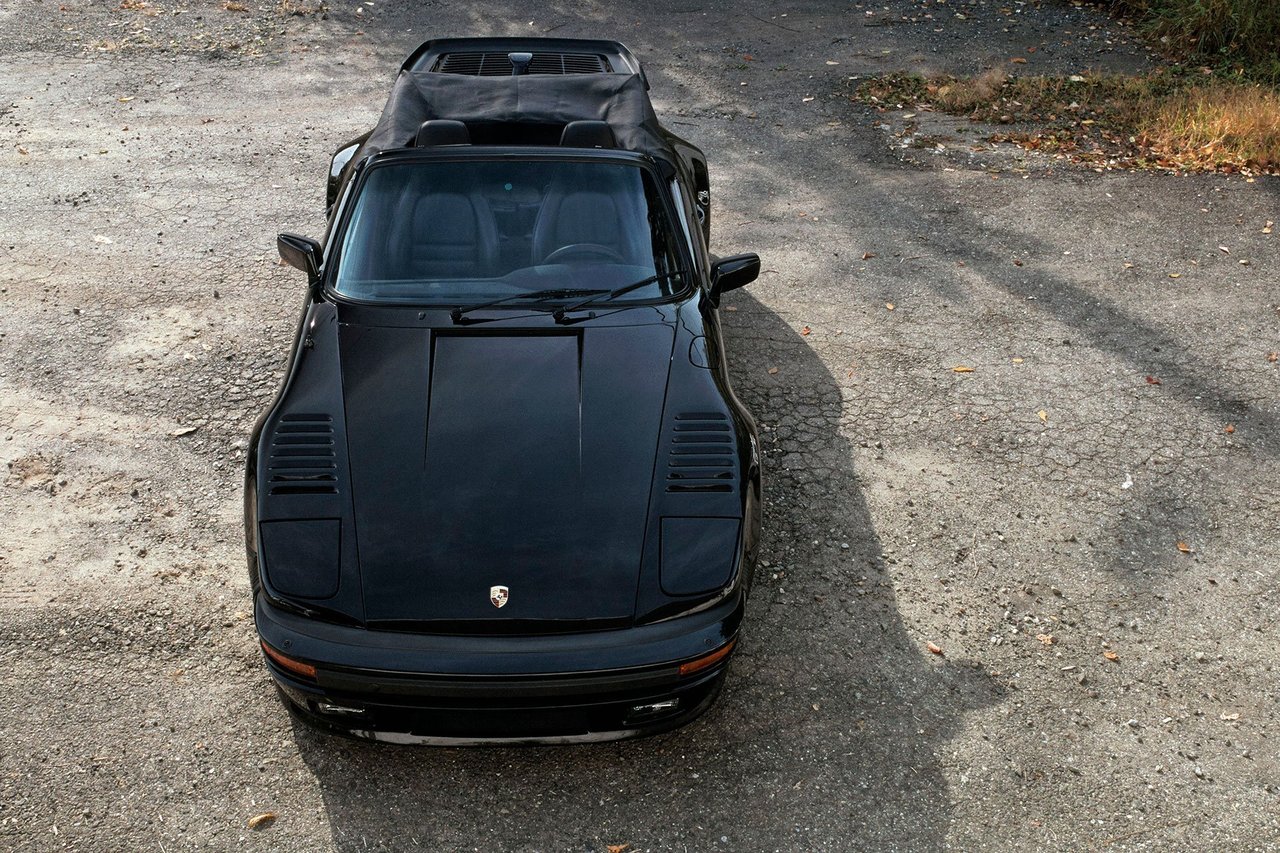
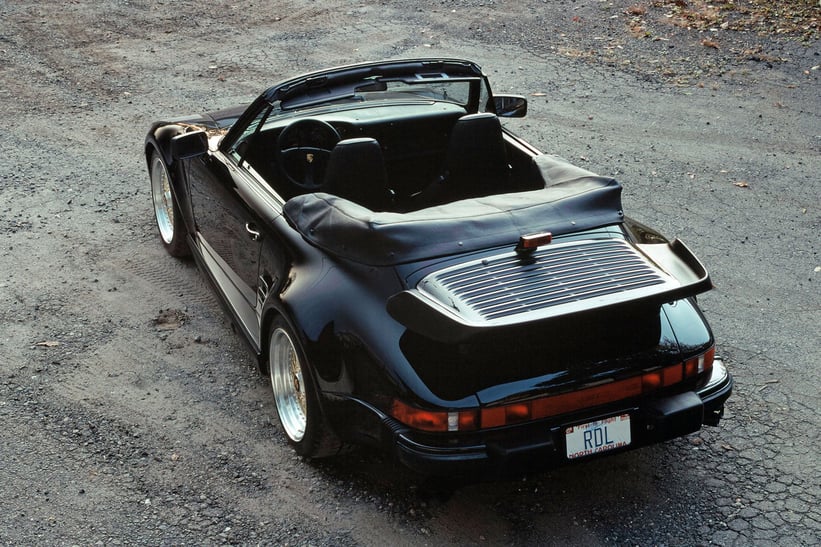
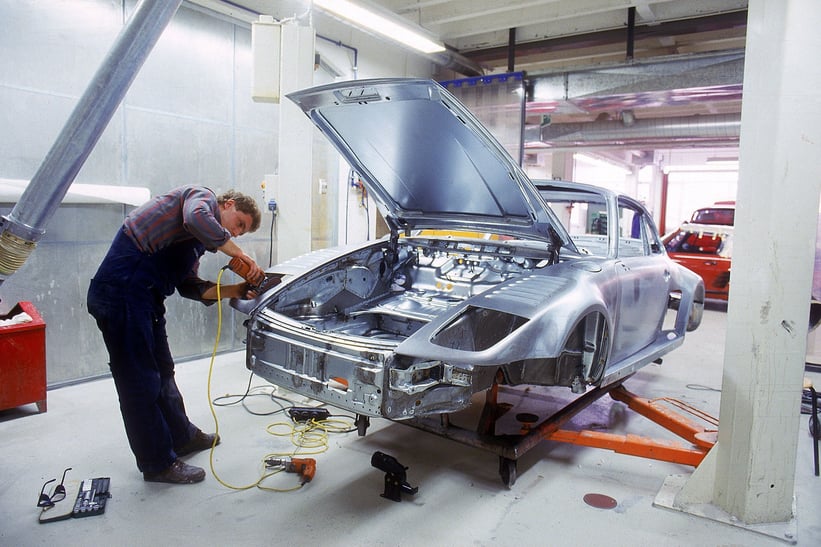
In the 1980s, global demand for unique, personalized sportscars grew rapidly and, as requests became even more extravagant and demanding, managers in Zuffenhausen decided to create a new “Porsche Exclusive” division in 1986. The aim was to leave literally every customer satisfied, whether they want special colours, power upgrades, or more dramatic rims and wings, any technically feasible wish was fulfilled.
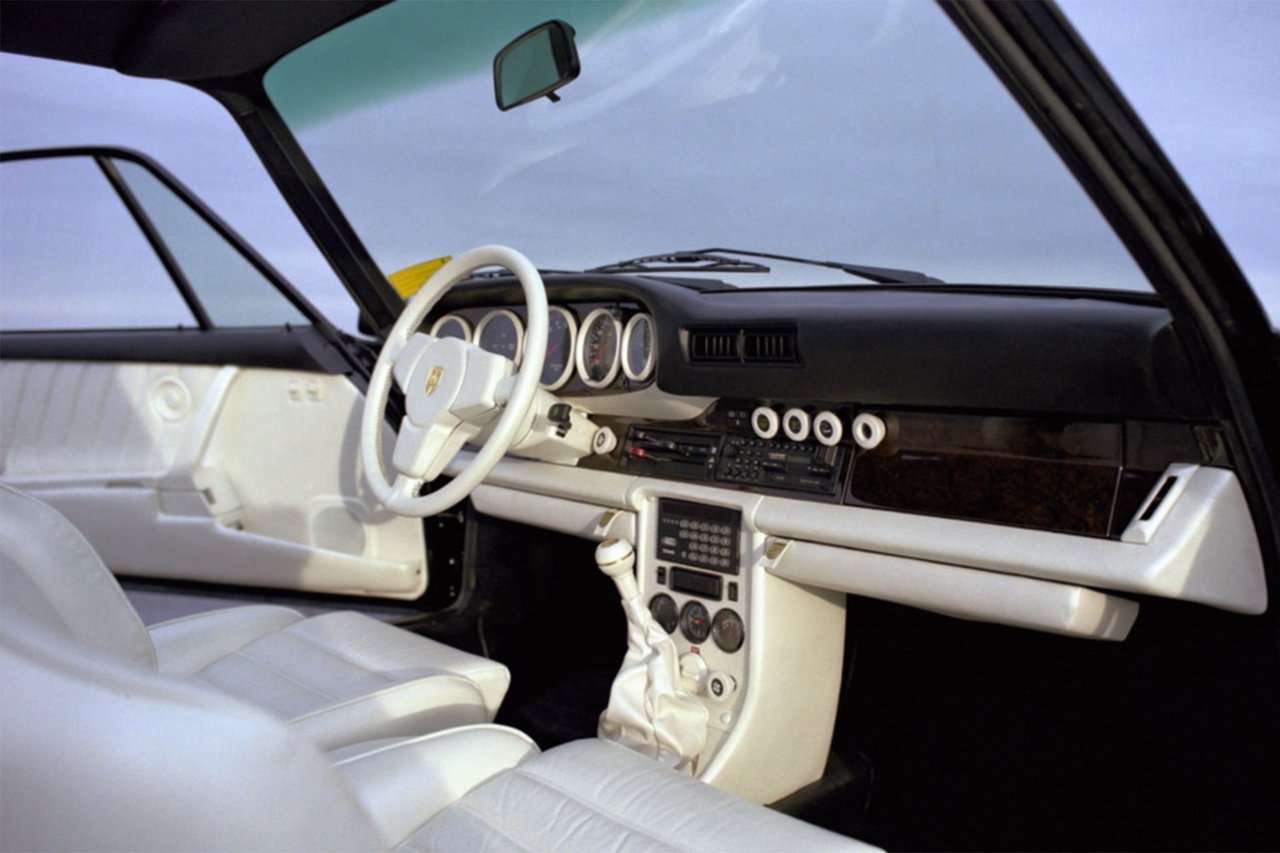
Stylistically, the 1980s were a decade of exuberance. Naturally, Porsche’s customers didn’t hesitate to ask for their fair share of extravaganza as well. Interiors were swathed in all-white leather, gearshift levers were decorated with emblems in gold and silver, and even the wooden dashboard made a return. Many 911 customers at the time opted for the so-called ‘Turbo look’ that gave their Carreras the appearance of the brand’s turbocharged top models. Client demands also lead to even more radical makeovers, such as the development of a ‘slant nose’ conversion of the Porsche 911 Turbo, inspired by the Type 935 Group 5 racing cars. In 1981, the flat-nosed look had officially been added to Porsche’s customization programme, becoming highly popular with international clients.
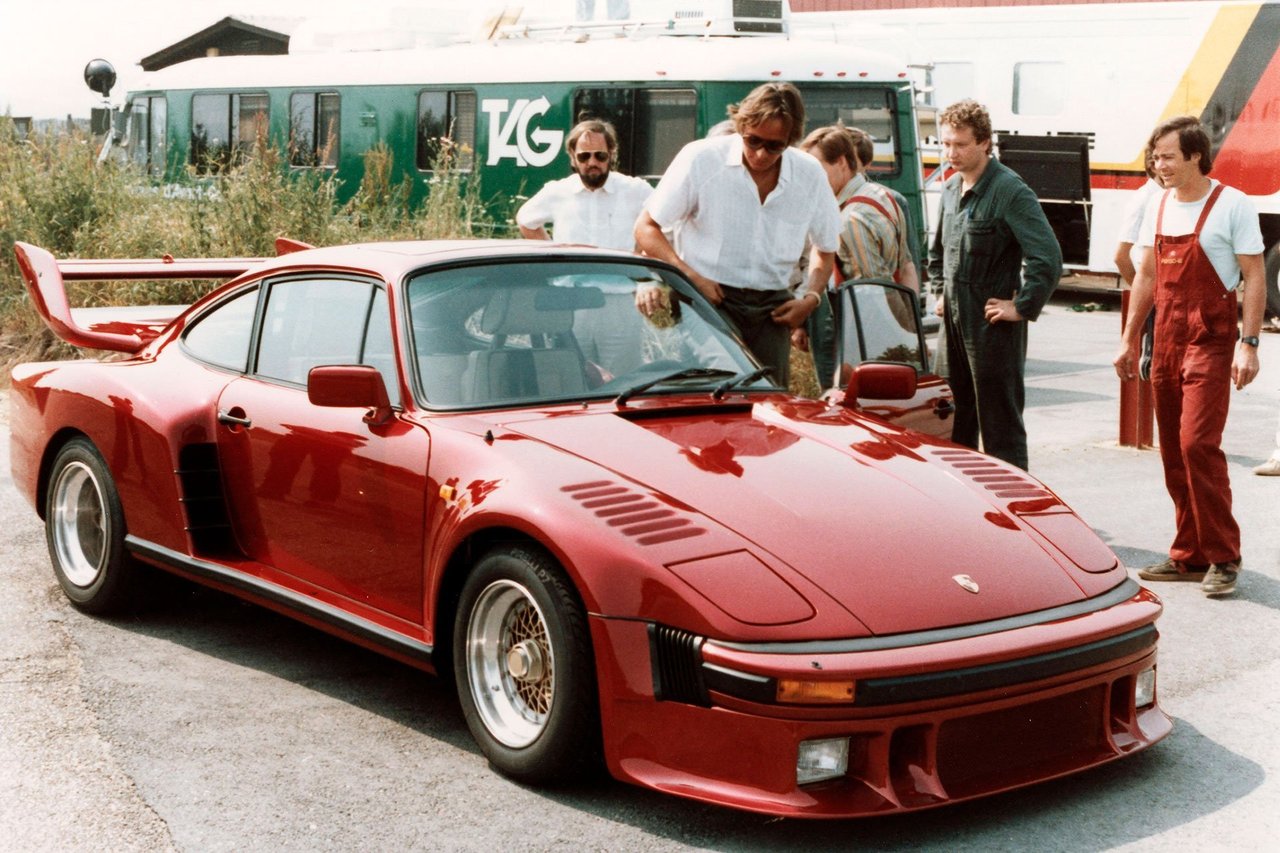
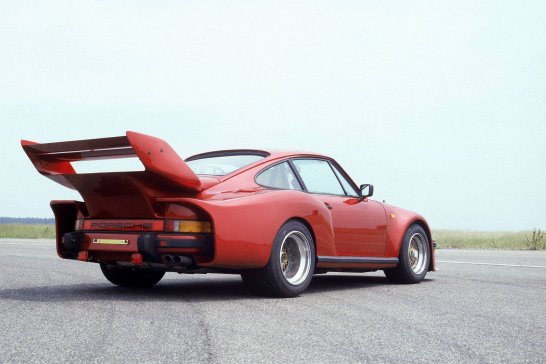
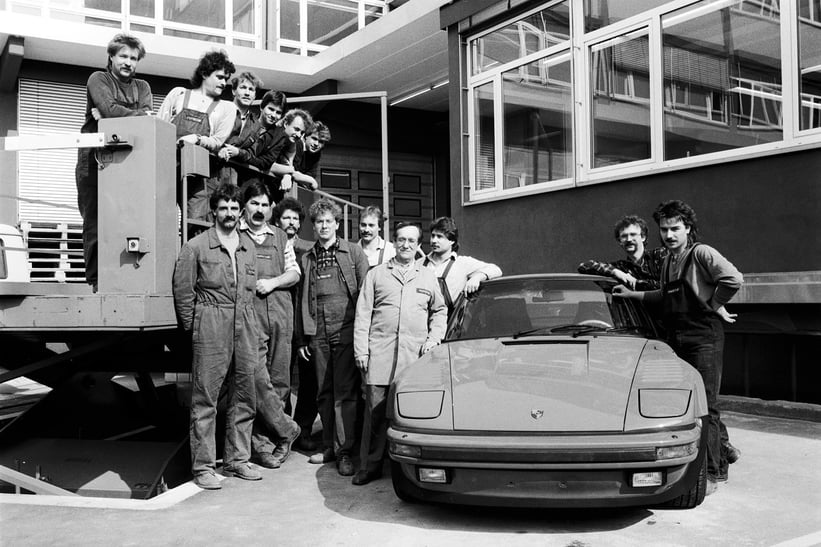
Porsche’s factory customization was unique at that time – no other manufacturer offered a comparable service at similar scale. Clients were able to have their cars painted in a peacock feather finish compiled of 18 different hues, or furnished to resemble the subtle shades of the desert. However, undoubtedly one of the most famous and elaborate cars created by Porsche Exclusive was the Porsche 935 Street. Commissioned by Saudi businessman and TAG-owner Mansour Ojjeh, the one-off Flat Nose conversion of a Porsche 930 Turbo was equipped a modified 934 racing engine and and every conceivable luxury. The invoice comprised of 17 pages and included approximately 550 individual items.
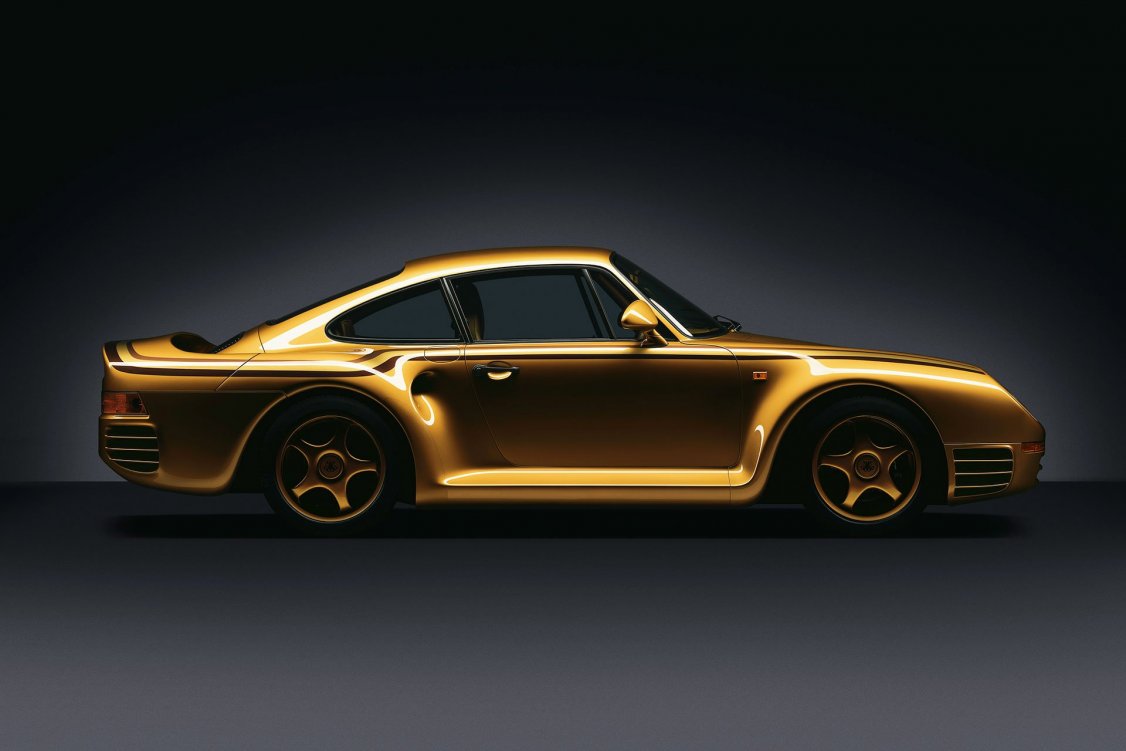
Then, when the Porsche 959 was introduced in 1987, their creativity reached another level: pianist Justus Frantz had 24 speakers installed in his supercar, while a European king commissioned a subtle revolver holster with a press button. A sheikh from Qatar even bought seven individualized Porsche 959s in very creative colour schemes, each with the Porsche logo replaced by his family crest in 24 carat gold.
The naughty Nineties
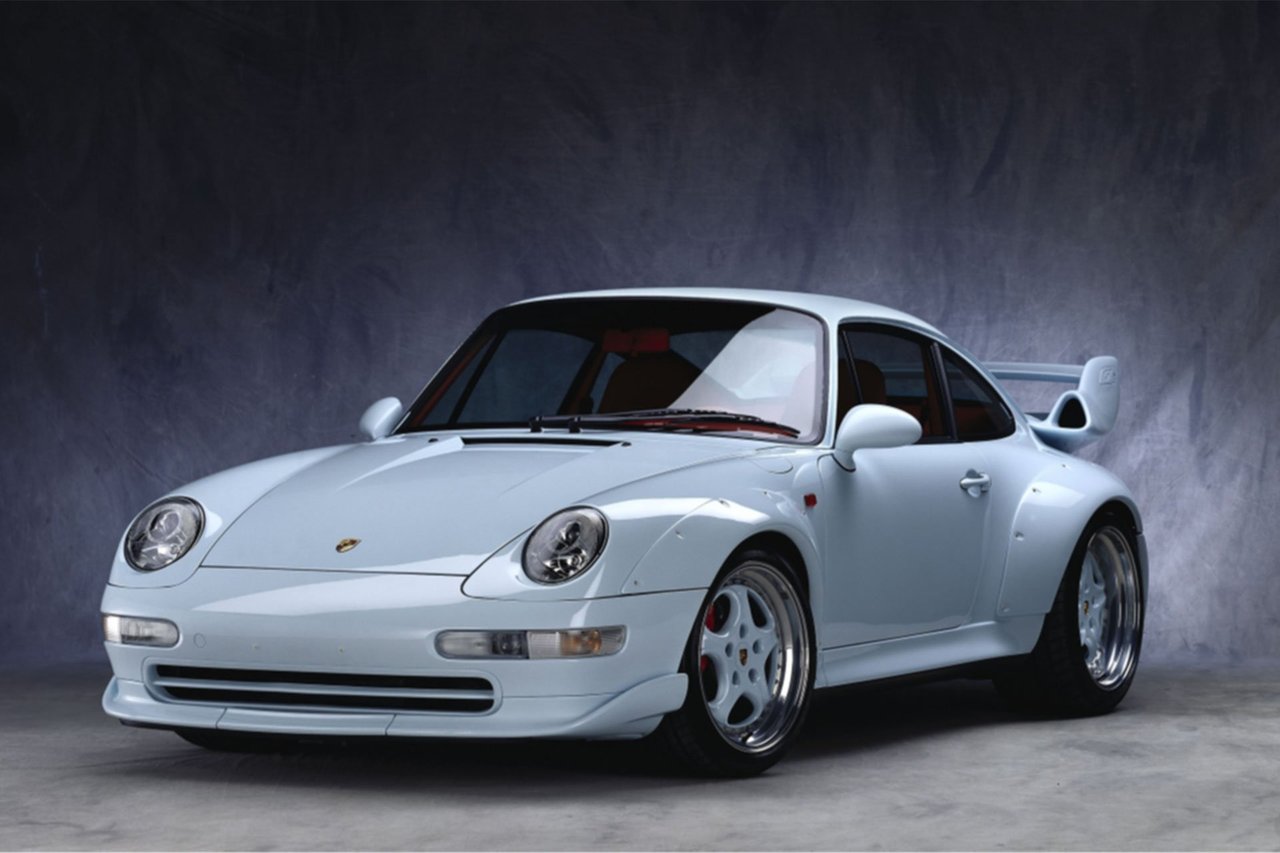

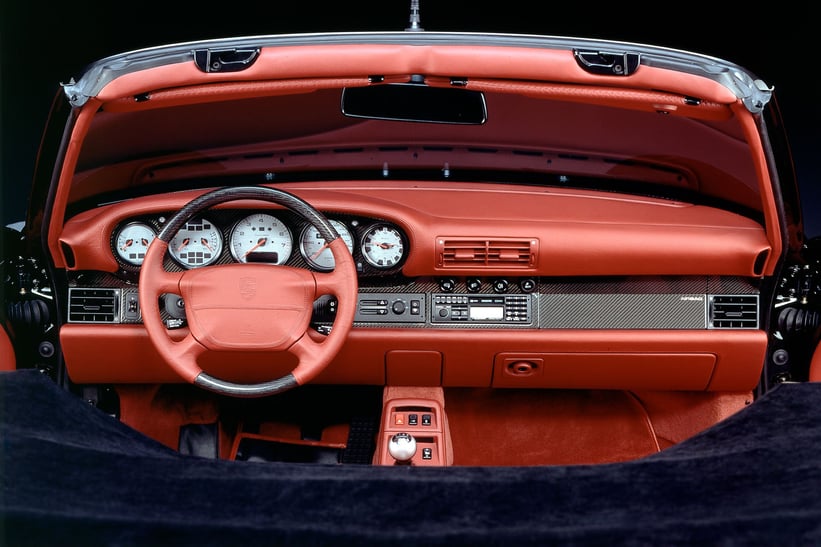
In the 1990s, things got even more bold and colourful as iconic shades like Amazon Green, Pearl, and Rubystone Red were introduced. As Porsche Exclusive’s clientele grew more and more international, the dealer network became the major point of access to the Zuffenhausen dream factory. Many customers now opted for tone-in-tone specifications, where every detail from the wheels to the leather-covered instrument rings and cigarette lighters matching the exterior paint. Cladding a cockpit in leather throughout required the use of up to eight different cow hides, while Seatbelts became available in even more shades, from Signal Yellow to Barolo Red. Race-derived materials such as aluminium and carbon surface finish were also entering car cockpits, moving Porsche’s street-legal sports cars even closer to the track.
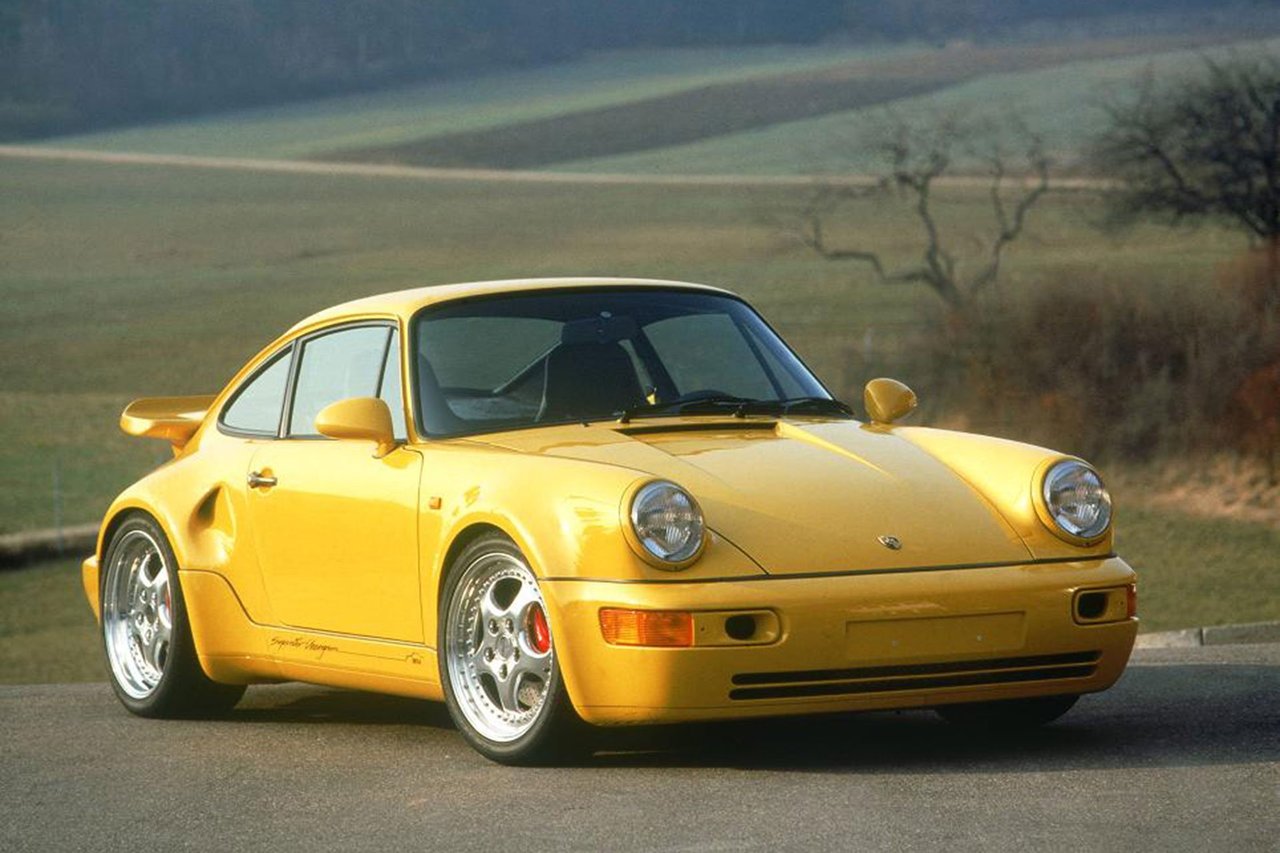
Many of the ideas developed at Porsche Exclusive were so popular that they made it into series production: cars like the Porsche 928 GTS or the Carrera 2 Speedster had their origins in the customization department. At the same time, the designers and engineers started working on strictly-limited editions that showcased the department’s full potential, which were sold only to Porsche’s most loyal customers. Developed in close collaboration with the racing department in Weissach, the 964 Porsche 911 Turbo S set a new benchmark for lightweight street racers at the 1992 Geneva Motor Show. For the first time at Porsche, major body parts had been made out of carbon-fibre reinforced plastic. With its custom Speed Yellow paint and matching seat backs, seat belts, and logos, the Turbo S was at the avant-garde of 1990s car styling. Another remarkable limited-edition sports car from Porsche Exclusive was the slant-nosed 911 Turbo 3.6 “Flachbau” that borrowed the headlights of the new 968.
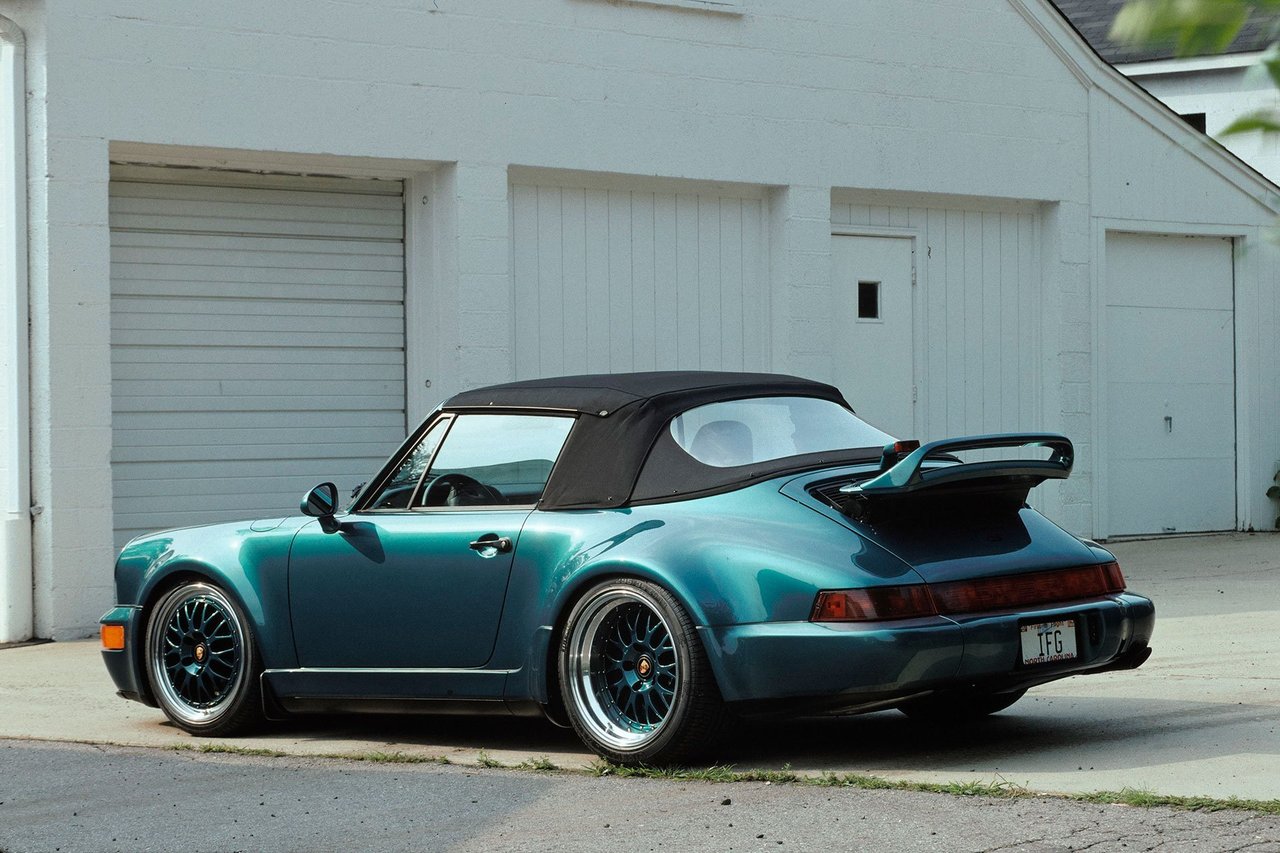
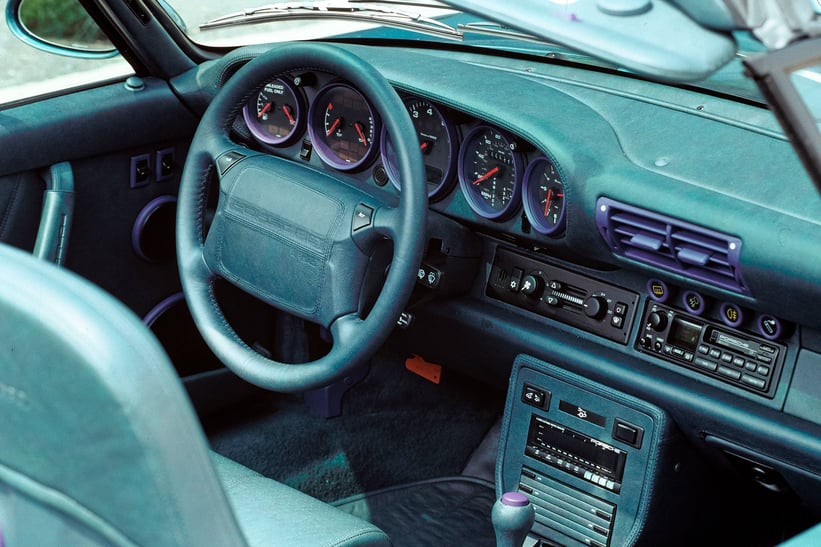

As convertibles became more and more popular, the demand for even more exclusive versions of the open-top Type 964 increased as well. Enthusiasts will remember the wide-body Porsche 911 Speedsters, the even rarer 911 Turbo Cabriolet equipped with the 3.3 Turbo engine, or the one-off American Roadster GS equipped with the 3.8-litre Carrera RS engine and painted in the colour scheme of the Porsche Panamericana concept car.
Soon after the 993 generation of the Porsche 911 was introduced in 1993, Porsche launched a new “Tequipment” program, offering customers the possibility to customize their Porsche after purchase with spoilers, wings, wheels, and countless other accessories for their sports cars. To celebrate the 60th birthday of F.A. Porsche in 1995, the designers created a Speedster version of the 993 that inspired the American actor Jerry Seinfeld to order a similar custom Speedster with an even more exceptional leather interior. And again, it was the Porsche 911 Turbo S that stirred the biggest waves in terms of performance and exclusivity, bringing the era of the air-cooled boxer engine to an impressive close.
The turn of the Millennium
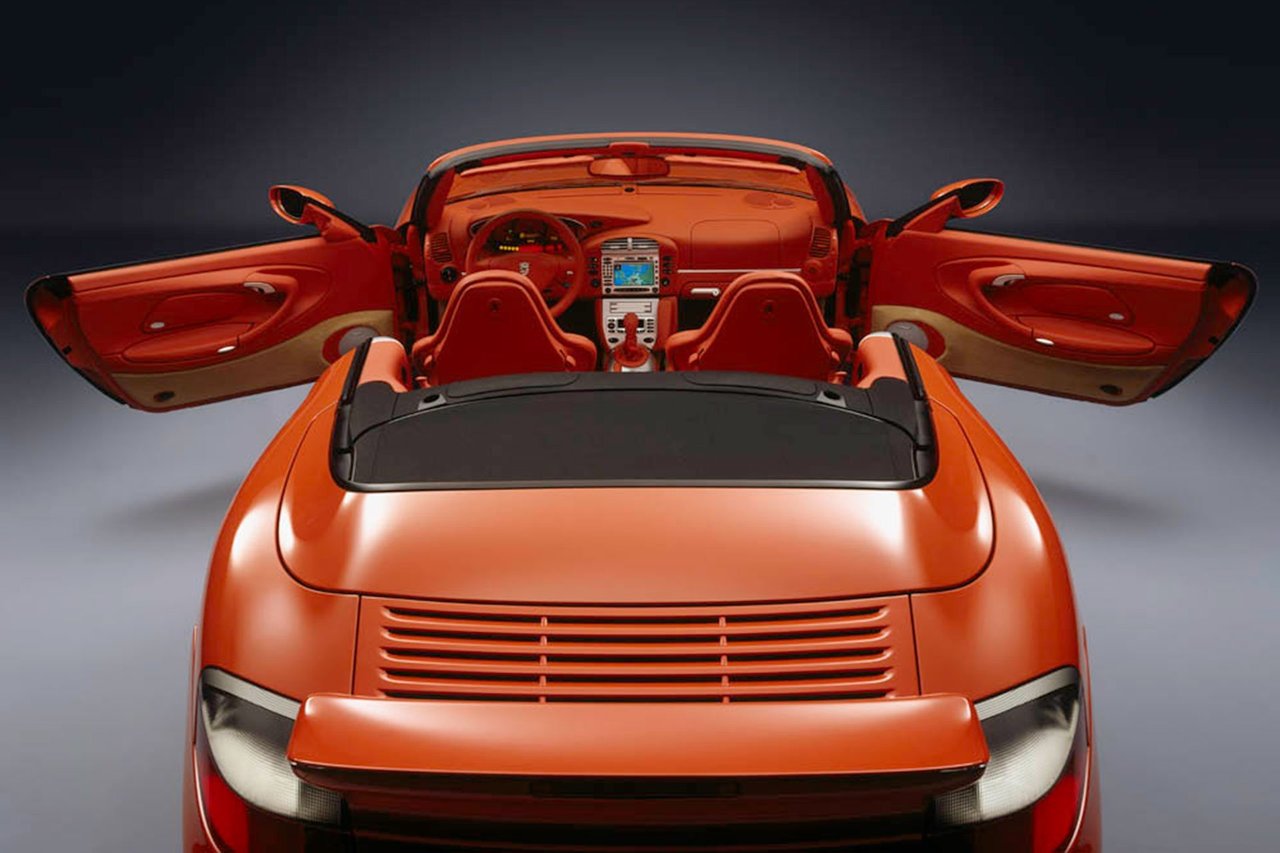

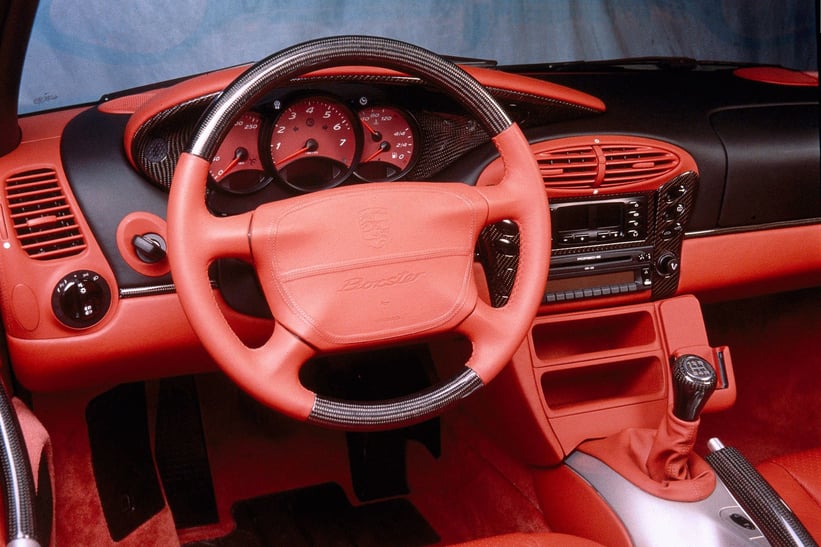
In the late 1990s, Porsche was celebrating new successes with the launch of the 996 generation Porsche 911 and the mid-engined Boxster, followed by the game-changing Cayenne in 2002 that tapped into new markets and customer groups. With its long tradition of in-house individualization, Porsche Exclusive was well-equipped to follow the pace of globalization, increase sales volumes, and cater toward even more diverse requests of different audiences around the world. While American customers preferred specific colour combinations – Guards Red over Savannah Beige leather was quite popular – clients in Japan tended to order Aerokits and Powerkits for their new cars. Following the growing demand, many options and accessories were now directly added to a car on the assembly line, turning the Exclusive & Tequipment program into an integral part of the planning, order, and production processes.
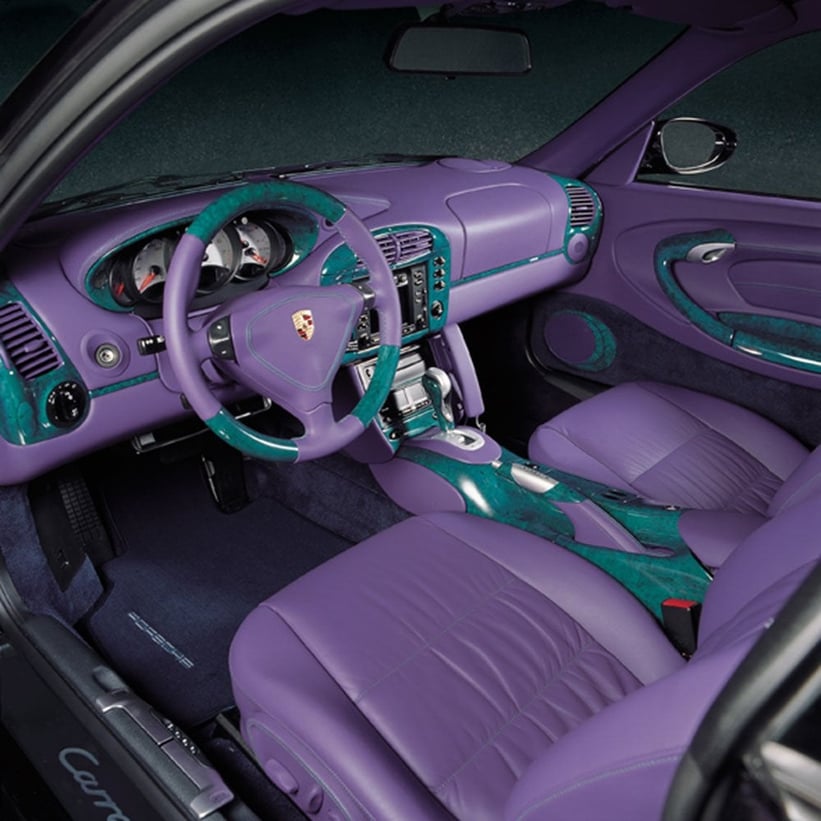
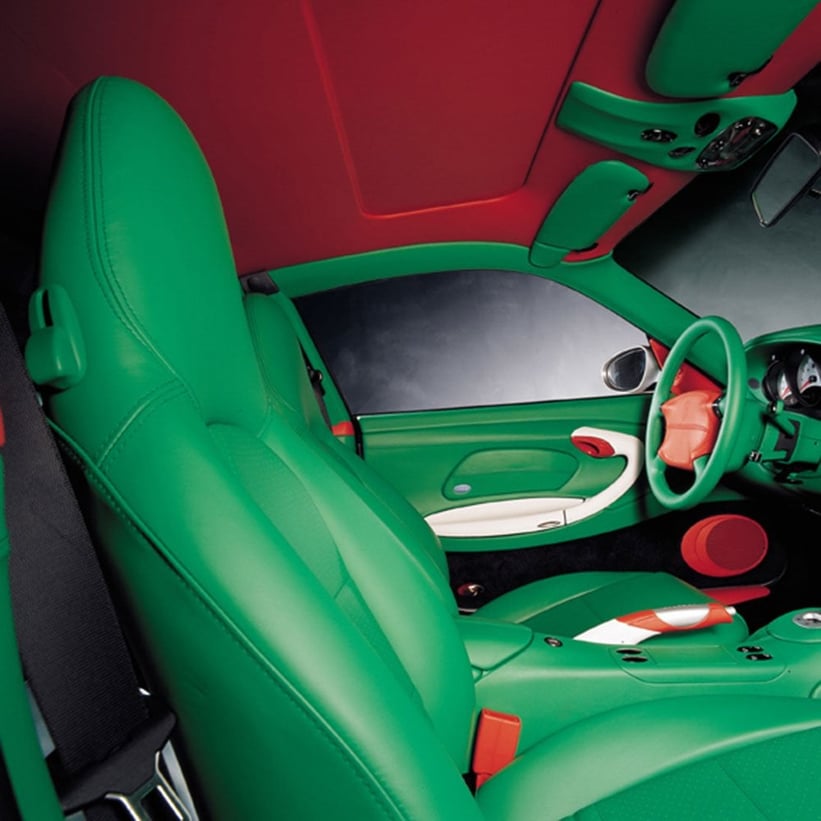
With the boom in digitalization, Porsche started installing the first navigation system into their cars. A very popular custom feature at the time was the sport exhaust system, which allowed the exhaust note to be made louder or quieter at the push of a button. Boxster customers with a taste for classic cars were able to order a Speedster rear-end, inspired by the iconic Porsche 550 Spyder. The taste for colour blocking and two-tone interiors around the turn of the Millennium also lead to some of the wildest creations one can imagine: one client had the cockpit of his Porsche covered in red, green, and white leather to pay homage to the national colours of Oman, while another opted for the rather intense combination of purple leather and turquoise burr maple, reminiscent of the Batman’s nemesis, The Joker.
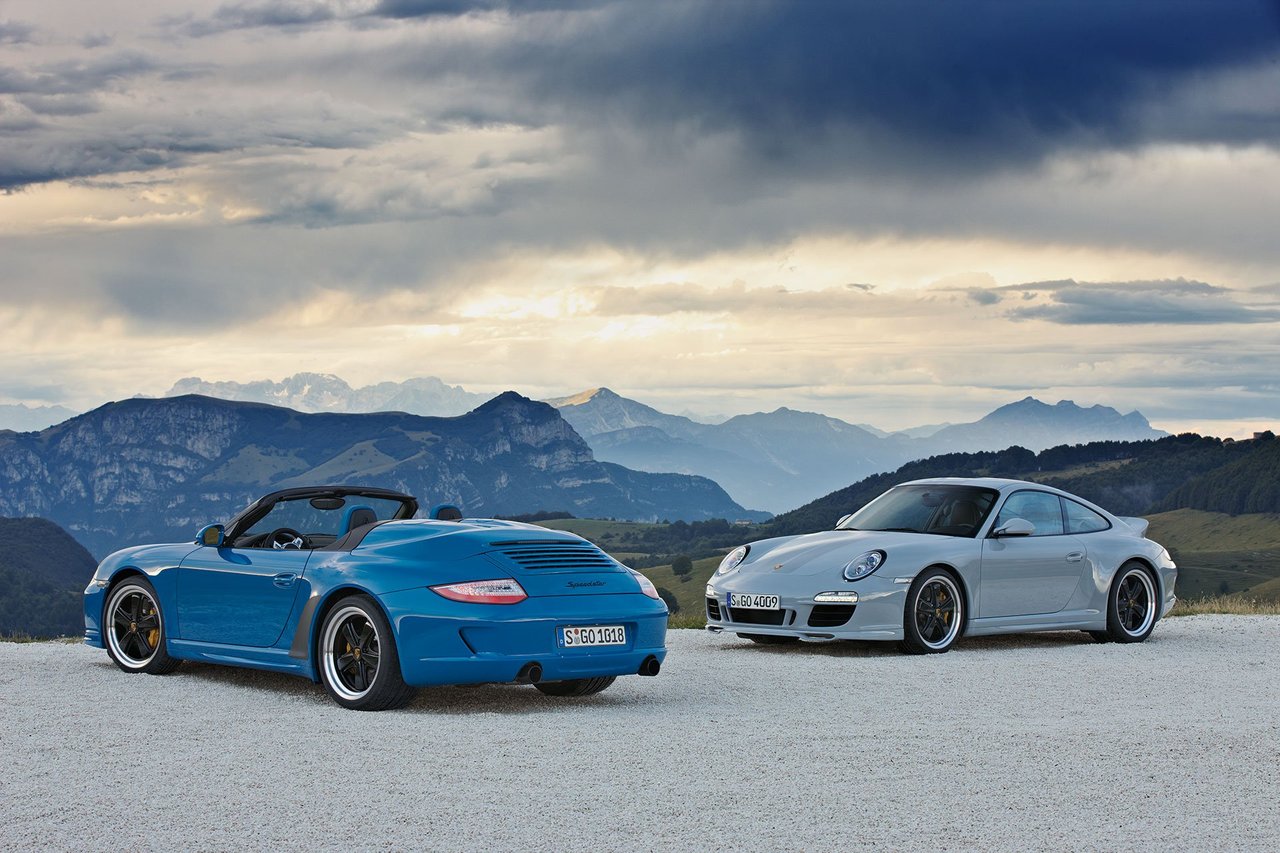
Throughout the late 1990s and the first years of the new millennium, Porsche had successfully diversified the 911 range, attracted new audiences with the Boxster, and added two highly successful new cars to the portfolio in form of the Cayenne and Panamera. While Porsche Exclusive was busy adding new options to their catalogues and customizing the ever-growing model range, the team decided to return to their roots in 2009 with a 1970s-inspired limited-edition of the Type 997, the Porsche 911 Sport Classic. Equipped with Fuchs wheels, the iconic ducktail, Pepita seats, and many more retro features, the Sport Classic was embraced by collectors and sold out almost immediately. One year later, the Porsche 911 Speedster revived the iconic name and low-slung, open-top shape.
Porsche Exclusive Manufaktur today
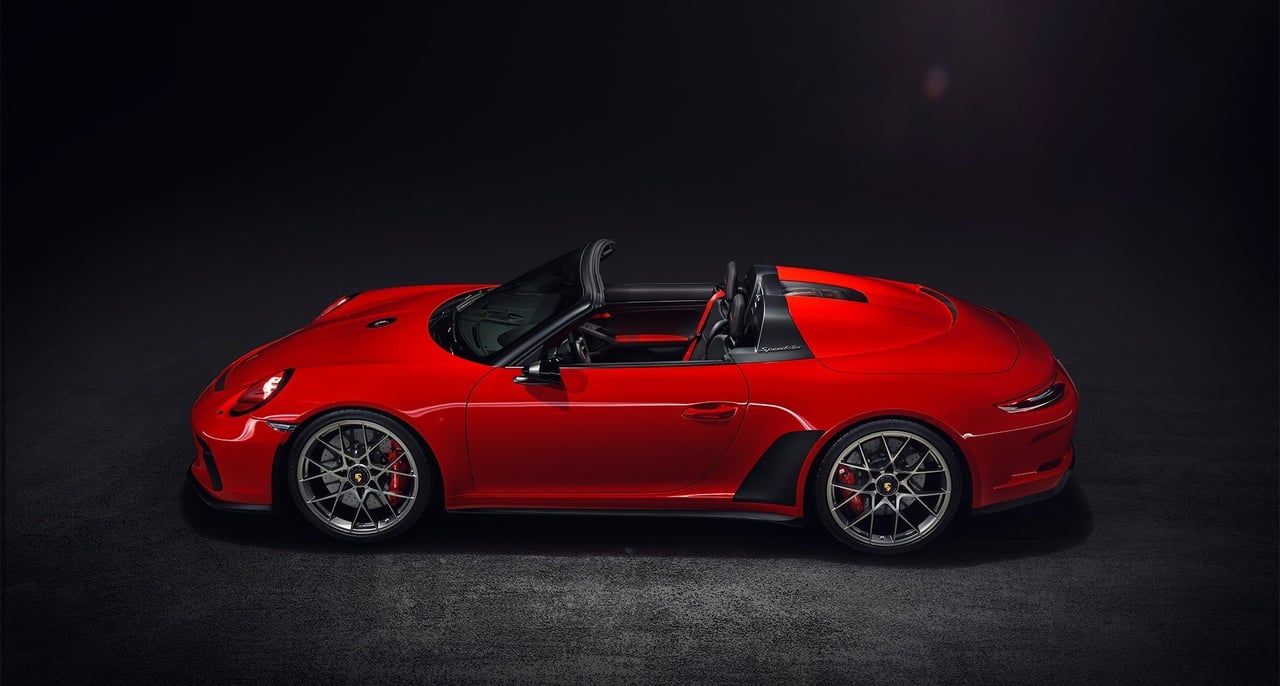
Inspired by the success of the two models, Porsche Exclusive released more exceptional limited-edition cars: in 2012, the 65th anniversary of the first Porsche club was celebrated with 13 Porsche 911 Club Coupes. In 2014, the craftsmen from Zuffenhausen demonstrated their skills with a hand-painted Panamera Exclusive Series, equipped with Poltrona Frau leather. In 2017, Porsche Exclusive crowned the brand’s top model with a highly customized Porsche 911 Turbo S Exclusive Series, limited to 500 cars. In 2019, Porsche Exclusive bid farewell to the 991 generation with another 911 Speedster, this time limited to 1948 cars. In 2020, a new Porsche 911 Targa Heritage Design edition inspired by the cars of the 1950s and 1960s was released as an ambassador of the studio’s growing Heritage portfolio of legendary colours, patterns, and trim options available for its contemporary cars. And in Spring of 2022, the Porsche 911 Sport Classic made it’s eagerly-awaited return, this time limited to 1250 cars.
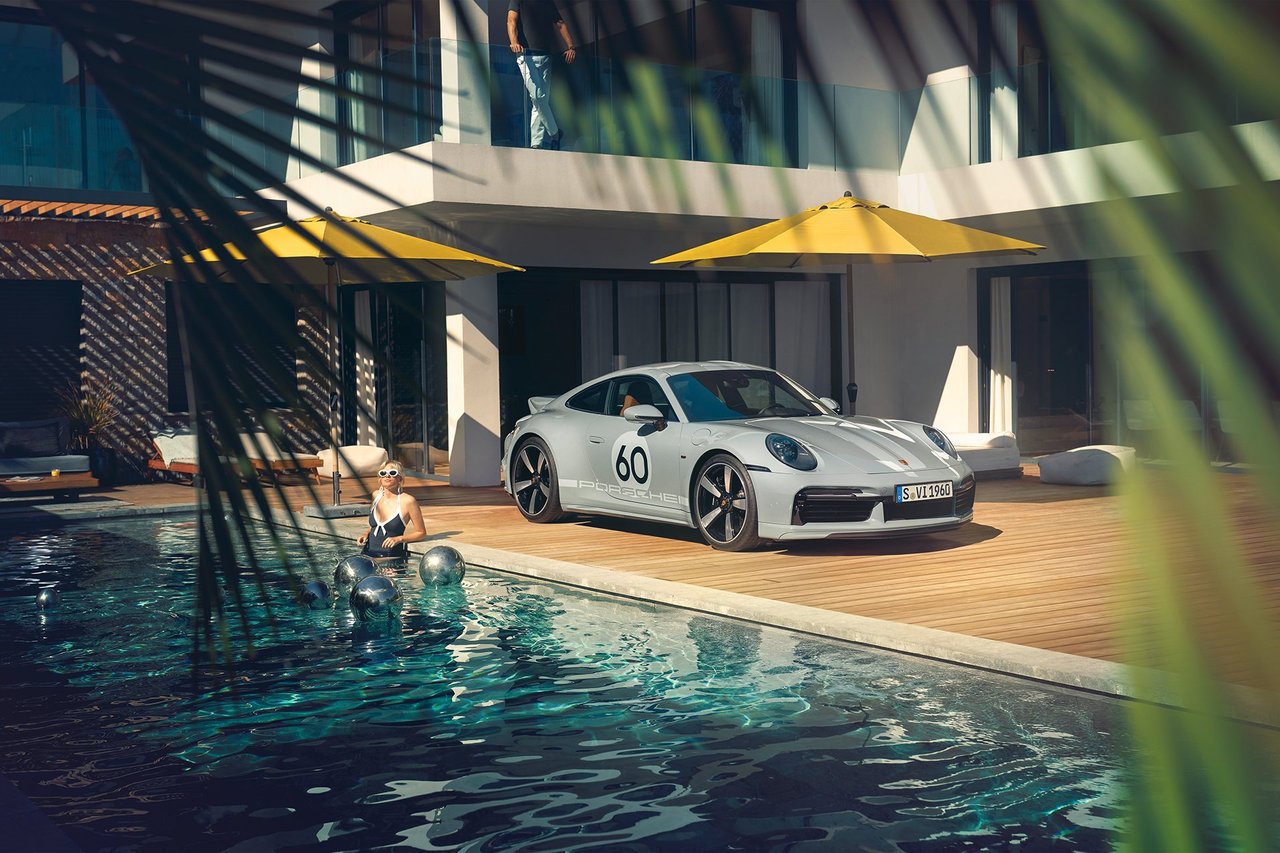
Today, the Porsche Exclusive Manufaktur is a full-scale dream factory, where the ideas and personality of the brand’s most distinguished customers are reflected in a steady stream of truly extraordinary cars. So, if you dream of owning and driving your very own unique and personal Porsche, the advisers at Porsche Exclusive Manufaktur will be delighted to guide and assist you on this exceptional journey.






























































